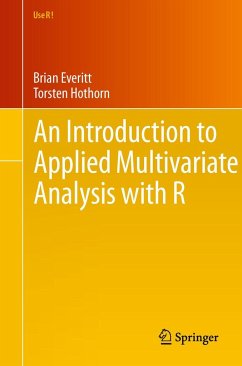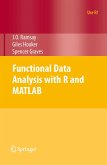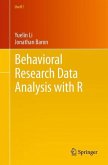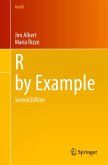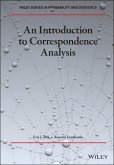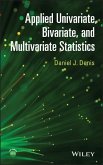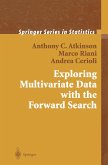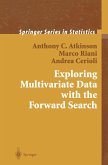The majority of data sets collected by researchers in all disciplines are multivariate, meaning that several measurements, observations, or recordings are taken on each of the units in the data set. These units might be human subjects, archaeological artifacts, countries, or a vast variety of other things. In a few cases, it may be sensible to isolate each variable and study it separately, but in most instances all the variables need to be examined simultaneously in order to fully grasp the structure and key features of the data. For this purpose, one or another method of multivariate analysis might be helpful, and it is with such methods that this book is largely concerned. Multivariate analysis includes methods both for describing and exploring such data and for making formal inferences about them. The aim of all the techniques is, in general sense, to display or extract the signal in the data in the presence of noise and to find out what the data show us in the midst of their apparent chaos.
An Introduction to Applied Multivariate Analysis with R explores the correct application of these methods so as to extract as much information as possible from the data at hand, particularly as some type of graphical representation, via the R software. Throughout the book, the authors give many examples of R code used to apply the multivariate techniques to multivariate data.
An Introduction to Applied Multivariate Analysis with R explores the correct application of these methods so as to extract as much information as possible from the data at hand, particularly as some type of graphical representation, via the R software. Throughout the book, the authors give many examples of R code used to apply the multivariate techniques to multivariate data.
"This book covers basic to advanced approaches for the analysis of multivariate data in R. ... All chapters end with a summary and exercises, making this book an excellent addition to applied statistics courses. The approach, numerous examples and fragments of code make it accessible to undergraduate and postgraduate students alike, as well as researchers ... ." (Irina Ioana Mohorianu, zbMATH 1306.62010, 2015)
"Each chapter introduces briefly the theory on well-known methods to analyze multivariate data and then focuses on the application of the multivariate techniques to example data with R. ... addressed to students in applied statistics courses or applied statisticians looking for a valuable educational textbook on multivariate analysis. ... an ideal textbook for students or persons, employed in the field of applied statistics, who wish to study the analysis of multivariate data and to apply multivariate techniques to real data." (Wiebke Werft, Biometrical Journal, Vol. 55 (6), 2013)
"This practical book provides a well-organized summary of popular multivariate data analysis techniques with practical examples. As the book title indicates, all introduced techniques are accompanied by relevant and friendly R codes, and thus it can be used for excellent R programming reference for those who wish to use R for multivariate data analysis." (Technometrics, Vol. 54 (4), November, 2012)
"Each chapter introduces briefly the theory on well-known methods to analyze multivariate data and then focuses on the application of the multivariate techniques to example data with R. ... addressed to students in applied statistics courses or applied statisticians looking for a valuable educational textbook on multivariate analysis. ... an ideal textbook for students or persons, employed in the field of applied statistics, who wish to study the analysis of multivariate data and to apply multivariate techniques to real data." (Wiebke Werft, Biometrical Journal, Vol. 55 (6), 2013)
"This practical book provides a well-organized summary of popular multivariate data analysis techniques with practical examples. As the book title indicates, all introduced techniques are accompanied by relevant and friendly R codes, and thus it can be used for excellent R programming reference for those who wish to use R for multivariate data analysis." (Technometrics, Vol. 54 (4), November, 2012)

